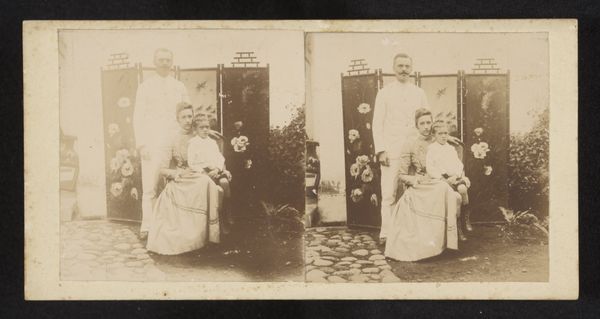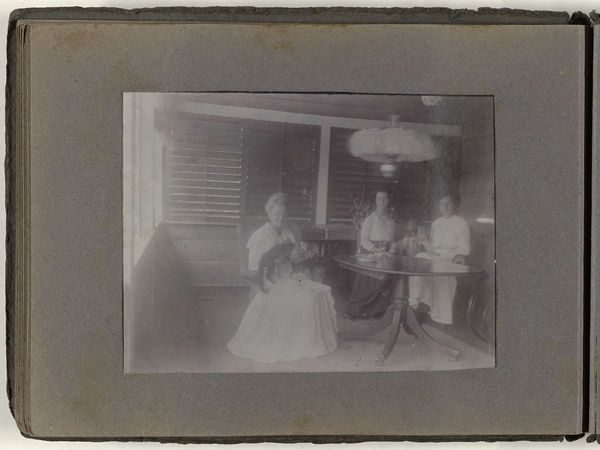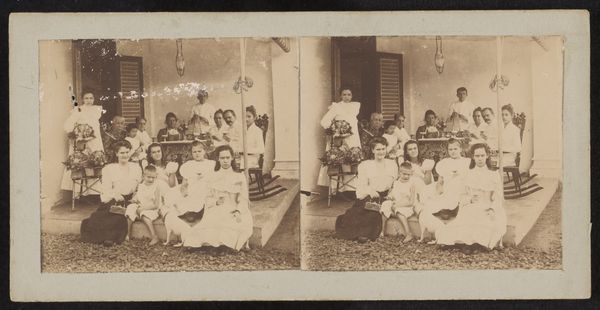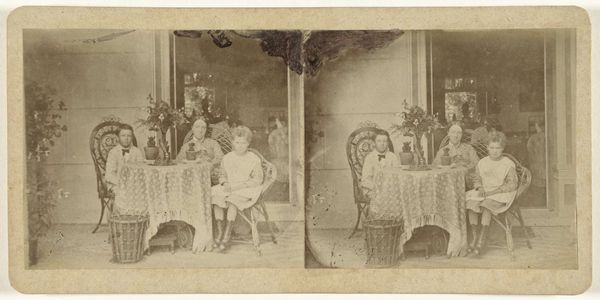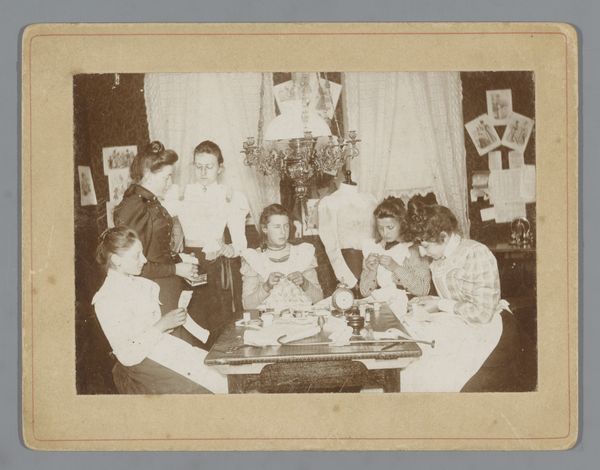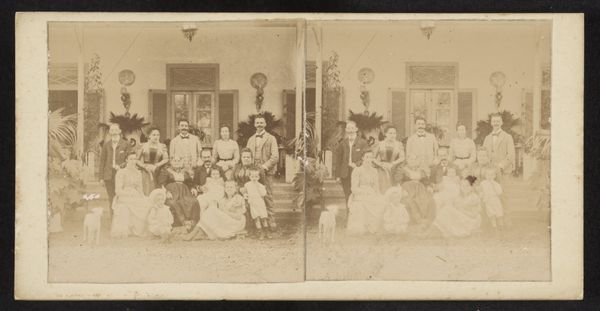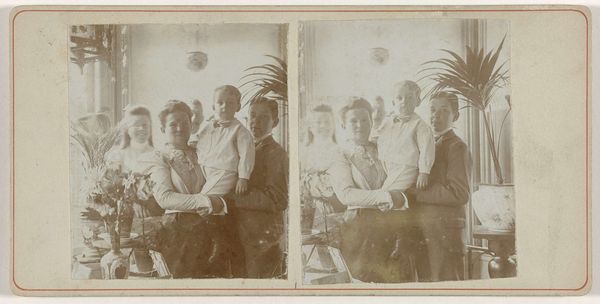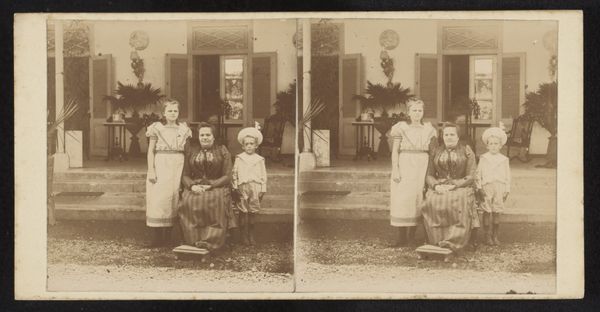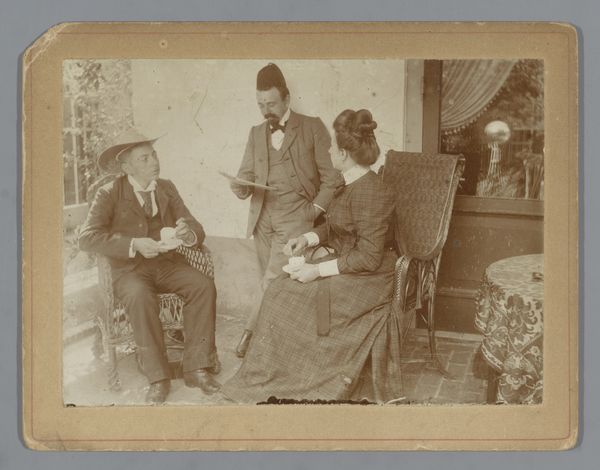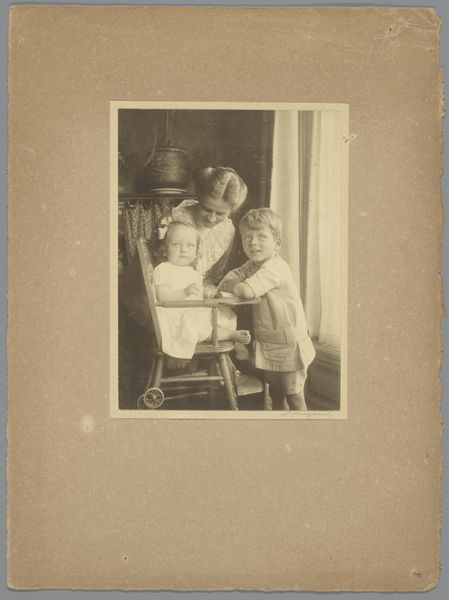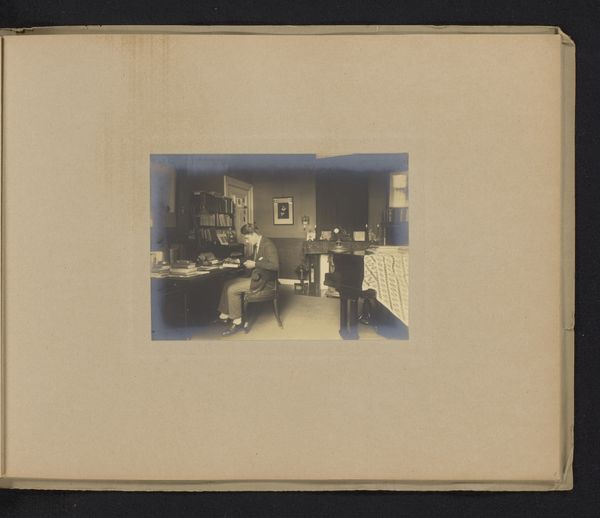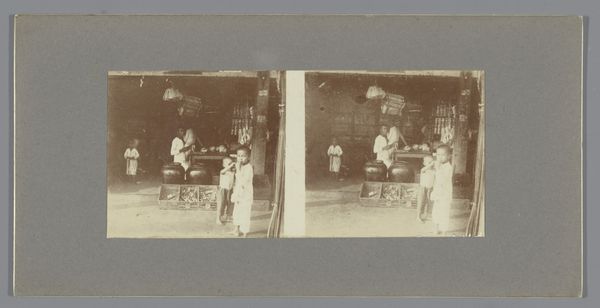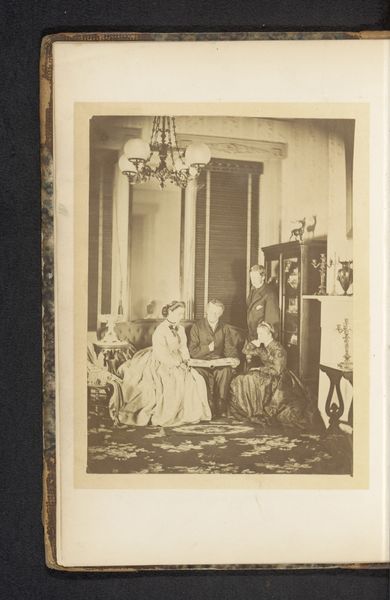
photography, albumen-print
#
portrait
#
aged paper
#
photography
#
group-portraits
#
orientalism
#
genre-painting
#
albumen-print
Dimensions: height 80 mm, width 80 mm, height 88 mm, width 178 mm
Copyright: Rijks Museum: Open Domain
Curator: Let’s discuss "Drie mannen en een vrouw," an albumen print at the Rijksmuseum, crafted somewhere between 1900 and 1922 by Robert Julius Boers. My initial reaction is to the rigid, formal composition. Editor: It definitely projects a certain stateliness. The subjects are positioned formally, seated, with minimal interaction, fostering a reserved atmosphere that invites more observation than immediate engagement. The lighting appears diffuse, adding to the subdued tone. Curator: And yet, isn’t it striking how the setting overwhelms the sitters? The screen, landscapes, lamps, all compete for attention within what looks to be an orientalist display of captured memories of the colony? Editor: The texture of the patterned textiles draped on the foreground figure provide depth and grounding. The formal framing contrasts strongly against this elaborate domestic staging. It provides insight into cultural performance, in a way that more intimate framing would simply fail to capture. Curator: Absolutely, the clothing acts as a powerful marker of colonial identity, situating them as both present and separate from the environment that threatens to consume them. Are we supposed to focus on the faces, or interpret their relationship to Indonesia via their outfits and this faux Asian interior design? Editor: This is what makes it such an interesting study. It operates through a structured formality, but this is challenged by the details – the shadows and light on faces, and the folds of fabric introduce nuanced, asymmetric features which challenge our gaze. It becomes very difficult to settle. Curator: Looking at this through the lens of history, the photo functions as a self-conscious act of display for colonial administration. They’re both at home and posing in ways that underline colonial authority in very coded, yet undeniably awkward manners. Editor: Indeed. These figures within the photography studio are both performative and documentary in intent. The texture invites our eye to search the faces for an essence. A very delicate staging! Curator: A window into a past where identities were shaped, in no small measure, by staging difference through orientalist iconography, captured in this aged paper's monochrome aesthetic. Editor: Precisely, its somber tonal range really underscores this sense of something studied.
Comments
No comments
Be the first to comment and join the conversation on the ultimate creative platform.
